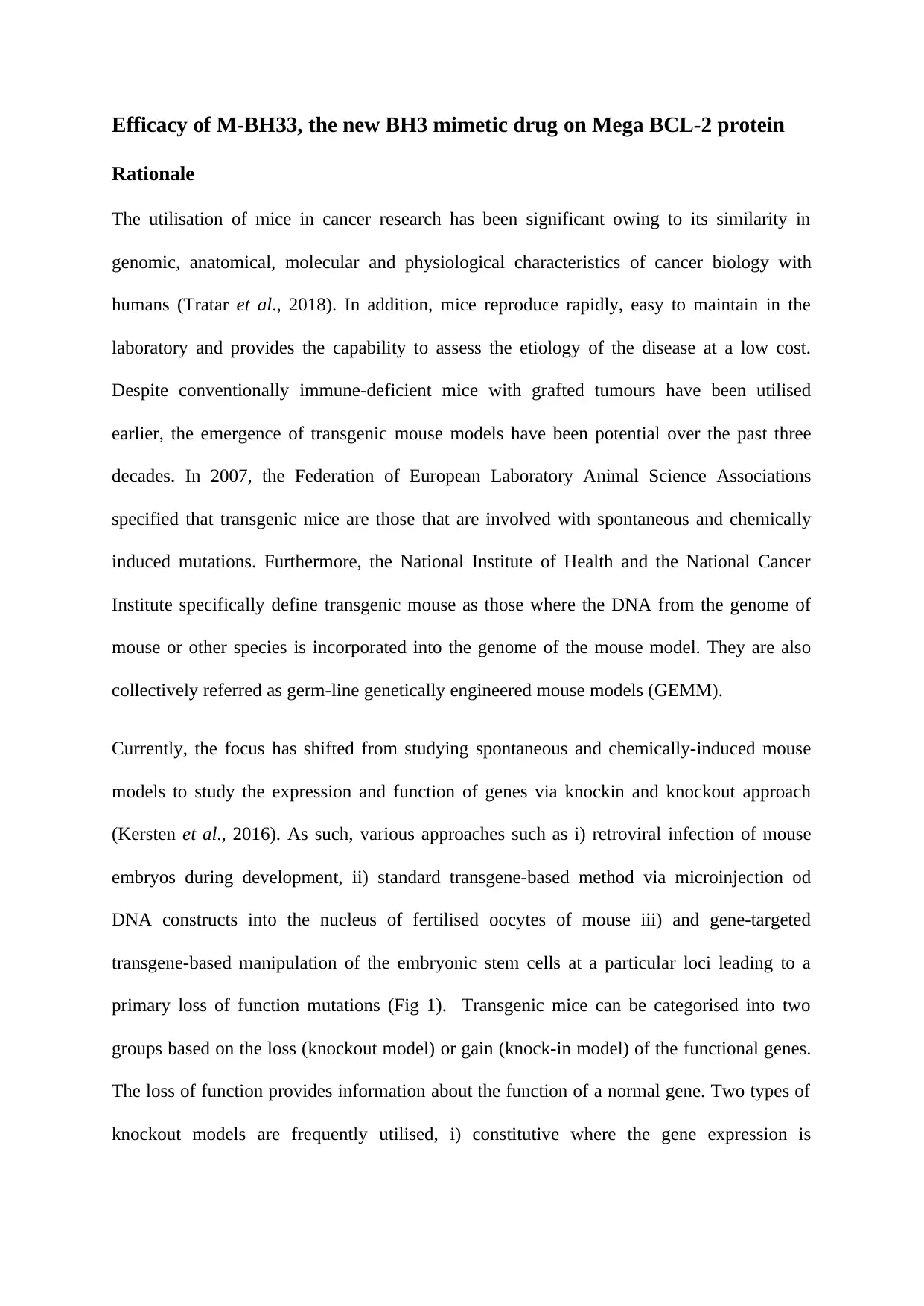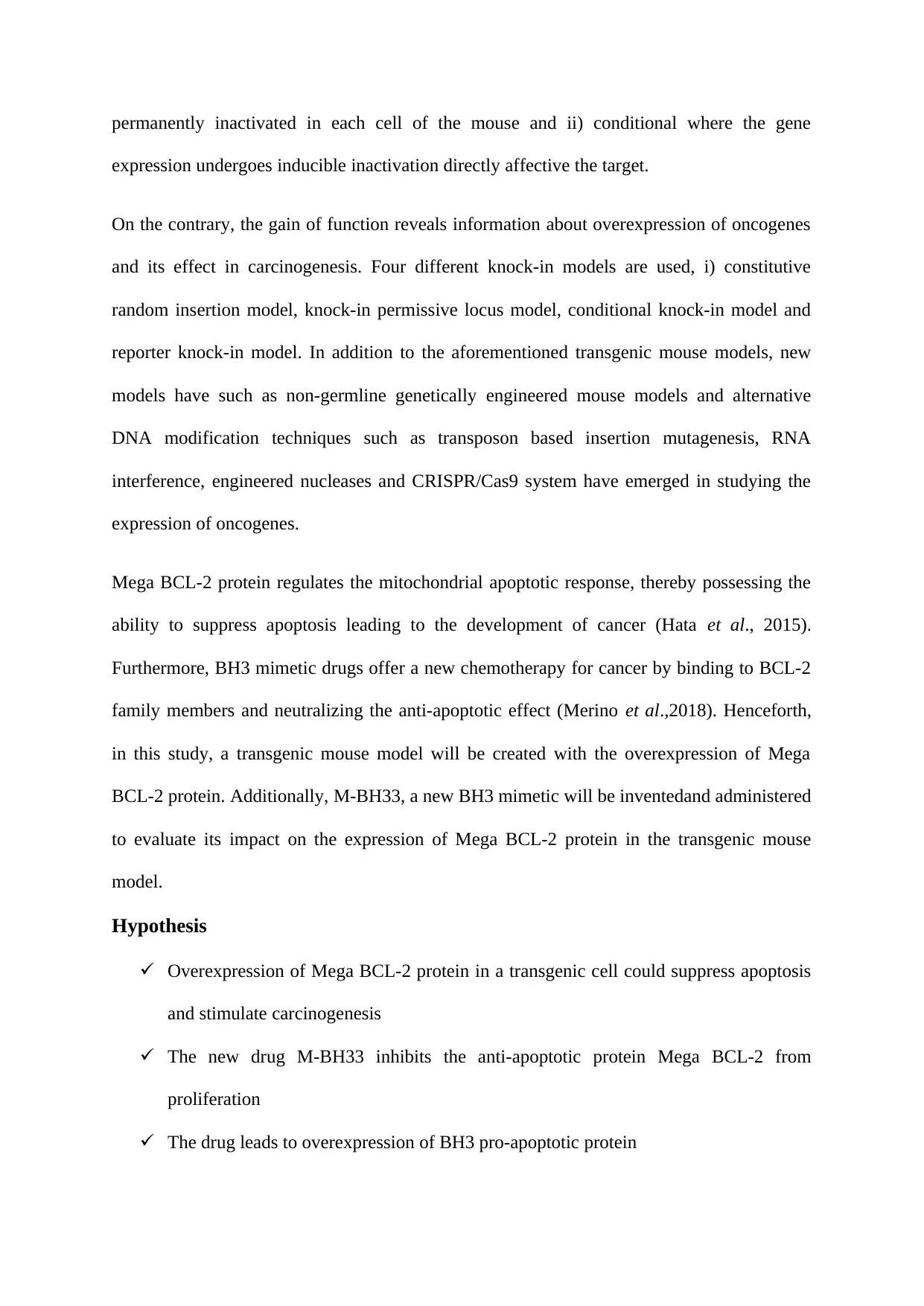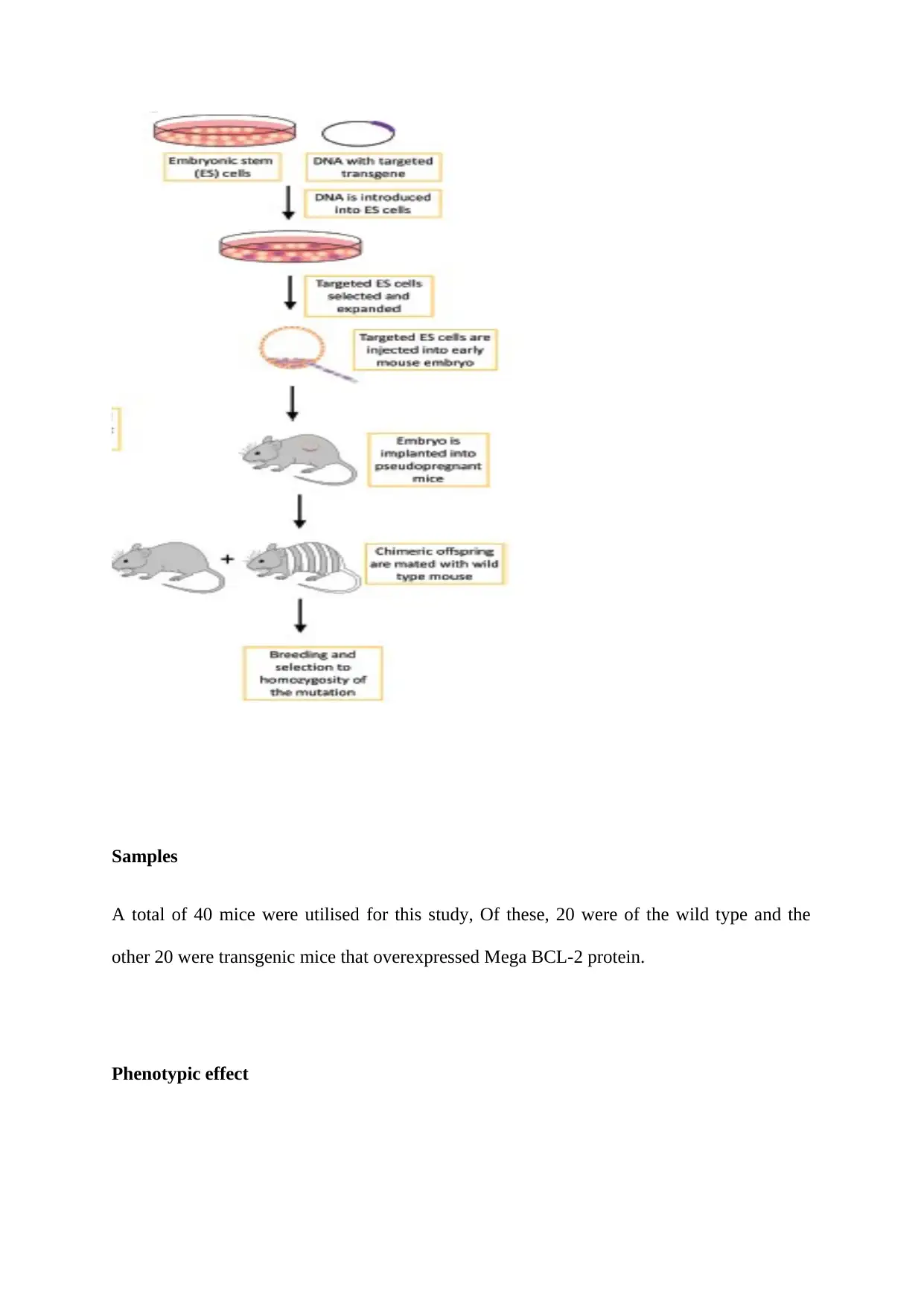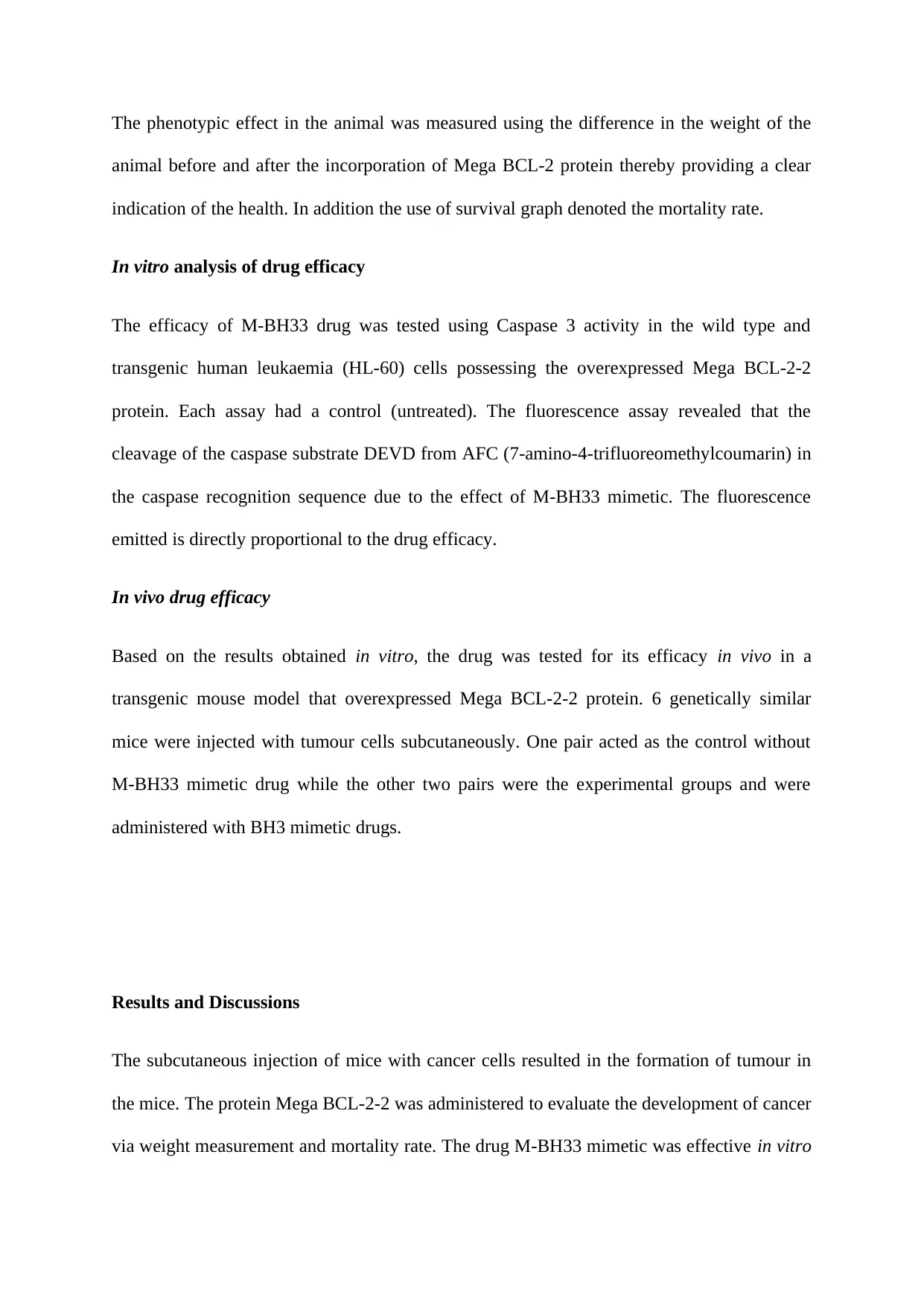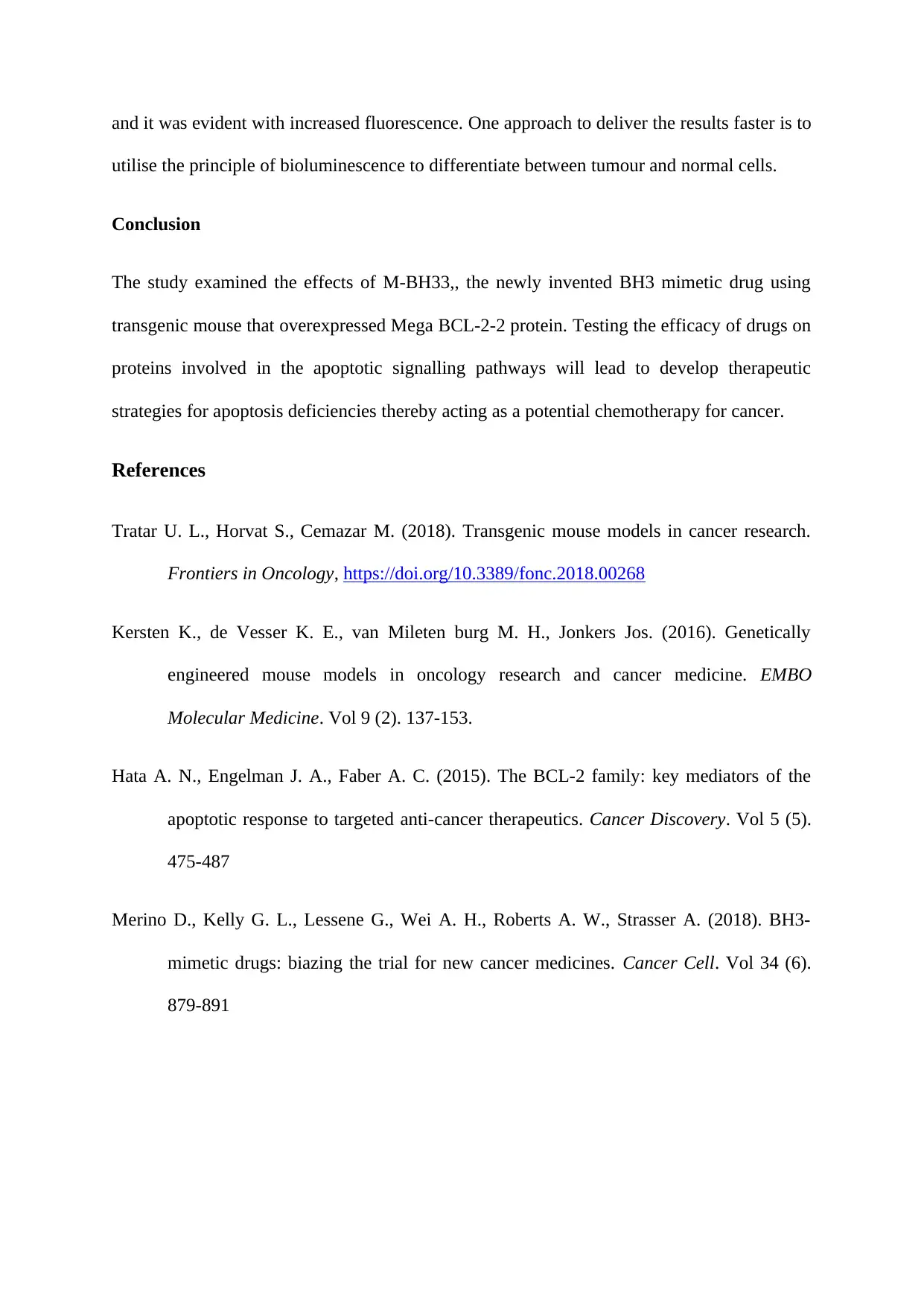Efficacy of M-BH33, the new BH3 mimetic drug on Mega BCL-2
VerifiedAI Summary
This is the script from my presentation about this essay and also my plan for it.
Hyphotesis
The Mega Bcl protein is overexpressed in a transgenic cell, it would prevent apoptosis and also increase the likelihood of developing cancer.
The Drug BH3 mimetics inhibits the anti-apoptotic protein Mega-Bcl from proliferating throughout the mitochondria as well as increase levels of the BH3 pro-apoptotic protein.
Aims :
Create the transgenic mouse model that is overexpressed with the Mega-Bcl protein knocked in.
To determine if the transgenic mouse models expression promotes a cancer phenotype and how its changing expression of mice’s health
To test the efficacy of BH3 mimetics drug in vitro and vivo use the tumour model
Transgenic Mouse Model :
We use Knock in Model
Artificially altering the expression of an already present or induced gene
Investigate the function of the gene, what does it do ? how does the phenotype change after expressing or losing expression the gene
Is i
![[object Object]](/_next/static/media/star-bottom.7253800d.svg)
![[object Object]](/_next/static/media/star-bottom.7253800d.svg)
